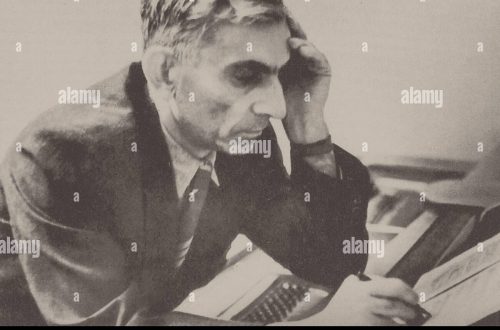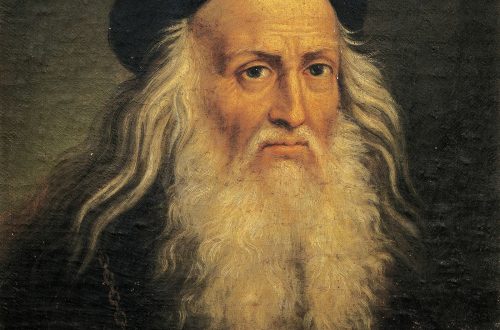
Vincent Persichetti |
Vincent Persichetti

Member of the National Academy of Literature and Art. He studied music from early childhood, played in the school orchestra, performed as an organist. From the age of 15 he served as an organist and musician. hands Reformed Church of St. Mark, then to the Presbyterian Church (1932-48) in Philadelphia. Studied with R. K. Miller (composition), R. Combs and A. Jonas (fp.) in music. Combs College; led the college orchestra. He studied conducting with F. Reiner at the Muses. in-te Curtis (1936-38), with O. Samarova (fp.) and P. Nordoff (composition) at the Conservatory (1939-41; graduated in 1945) in Philadelphia. Simultaneously (1942-43) improved with R. Harris in the summer courses at Colorado College. From 1939-42 he headed the composition department at Combs College. In 1942-62 he headed the composer department. Philadelphia Conservatory. From 1947 he taught at the composition department. at the Juilliard Music. school in New York (since 1948). Since 1952 Persichetti – Ch. music consultant. publishing house “Elkan-Vogel” in Philadelphia.
Persichetti gained fame after the Spanish. in 1945 by the Philadelphia Orc. under ex. Y. Ormandy of his “Fables” (6-part suite based on Aesop’s fables for a reader and orchestra). The success of subsequent Op. (symphonic, chamber, chorus and piano) made Persichetti one of the leading Amer. composers (his compositions are also performed in other countries). Received a number of awards for his works. In addition to creativity and pedagogical work, Persichetti acts as a muses. writer, critic, lecturer, conductor and pianist – performer of his own. op. and production other modern composers (often jointly with his wife, pianist Dorothea Persichetti).
Persichetti’s music is distinguished by structural clarity, dynamism, associated with a constant intense rhythmic. music transformation. fabrics. Melodich. material, bright and characteristic, unfolds freely and plastically; of particular importance is the initial motivic education, in which the basics are laid. rhythmic intonation elements. harmonic premier language polytonal, sound fabric retains transparency even at moments of maximum tension. Persichetti masterfully uses the possibilities of voices and instruments; in their productions. (c. 200) naturally combines diff. types of technology (from neoclassical to serial).
Compositions: for orc. – 9 symphonies (1942, 1942, 1947; 4th and 5th for strings. Orc., 1954; 6th for band, 1956; 1958, 1967, 9th – Janiculum, 1971), Dance. overture (Dance overture, 1948), Fairy tale (Fairy tale, 1950), Serenade No 5 (1950), Lincoln’s Message (Lincoln’s address, for a reader with orc., 1972); Introit for strings. orc. (1963); for instrument with orc.: 2 fp. concerto (1946, 1964), the play Devastated people (Hollow men) for trumpet (1946); Concertino for piano (1945); chamber-instr. ensembles – sonata for Skr. and fp. (1941), suite for Skr. and VC. (1940), Fantasy (Fantasia, 1939) and Masks (Masks, 1961, for skr. and fp.), Vocalise for Vlch. and fp. (1945), Infanta Marina (Infanta Marina, for viola and piano, 1960); strings. quartets (1939, 1944, 1959, 1975), op. quintets (1940, 1955), concerto for piano. and strings. quartet (1949), plays – King Lear (for spirit quintet, timpani and piano, 1949), Pastoral for spirit. quintet (1945), 13 serenades for dec. compositions (1929-1962), Proverbs (Parables, 15 pieces for various solo instruments and chamber-instrumental ensembles, 1965-1976); for choir with orchestra – oratorio Creation (Creation, 1970), Mass (1960), Stabat Mater (1963), Te Deum (1964); for choir (with organ) – Magnificat (1940), Hymns and responces for the whole church year (Hymns and responces of the church year, 1955), cantatas – Winter (Winter cantata, for female choir with piano), Spring (Spring cantata, for female choir with violin and marimba, both – 1964), Pleiades (Pleyades, for choir, trumpet and strings. orc., 1966); a cappella choirs – 2 Chinese songs (Two Chinese songs, 1945), 3 canons (1947), Proverb (Proverb, 1952), Seek the Highest (1956), Song of peace (Song of peace, 1957), Celebrations (Celebrations, 1965), 4 choirs per op. E. E. Cummings (1966); for the band – Divertimento (1950), Choral Prelude How Clear the Light of a Star (So pure the star, 1954), Bagatelles (1957), Psalm (195S), Serenade (1959), Masquerade (Mascarade, 1965), Parable (Parable, 1975) ); for fp. – 11 sonatas (1939-1965), 6 sonatas, poems (3 notebooks), Processions (Parades, 1948), Variations for the album (1952), Little notebook (The Little piano book, 1953); for 2 fp. – Sonata (1952), Concertino (1956); concerto for fp. in 4 hands (1952); sonatas – for Skr. solo (1940), wlc. solo (1952), for harpsichord (1951), organ (1961); for voice with fp. – cycles of songs on the next. E. E. Cummings (1940), Harmonium (Harmonium, 20 songs to lyrics by W. Stevens, 1951), songs to lyrics. S. Tizdale (1953), K. Sandberg (1956), J. Joyce (1957), J. H. Belloc (1960), R. Frost (1962), E. Dickinson (1964) and ad.; music for ballet post. M. Graham “And then …” (Then One Day, 1939) and “The Face of Pain” (The Eyes of Anguish, 1950).
J. K. Mikhailov





